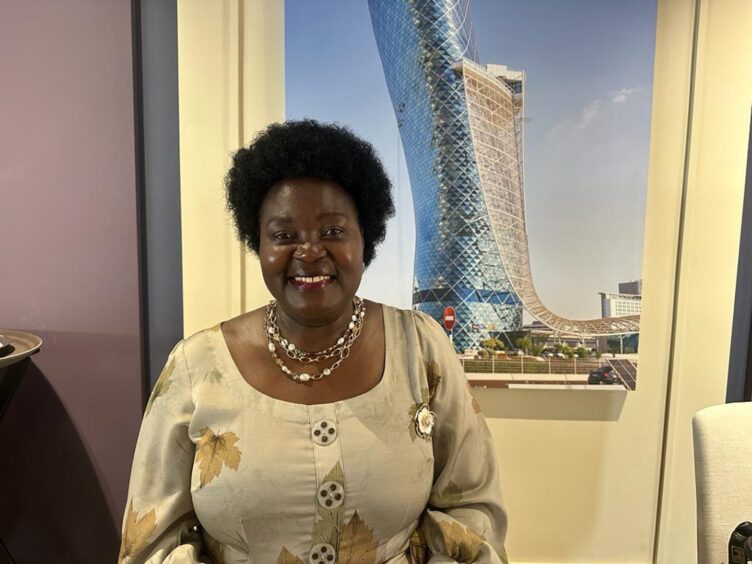
Uganda’s energy minister has said barriers preventing construction of the East African Crude Oil Pipeline (EACOP) have been resolved.
“First oil is on track for 2025,” Minister of Energy and Mineral Development Ruth Nankabirwa told Energy Voice on the sidelines of Adipec. “We hope that by the time we see the first oil the East African pipeline will also be in place.”
It was insurance that has posed the biggest challenge for EACOP, she said, and this has been resolved.
“The problem was on insurance, with Sinosure [the Chinese export credit agency], which had issues with the Tanzanian government. That pulled us back. But those issues have been solved,” the minister said.
Tanzanian President Samia Suluhu visited China, Nankabirwa said, and talked to her Chinese counterpart, resolving the issue.
“I have high hopes that the issues regarding Sinosure no longer exist and so the remaining money that the company needed will be secured,” said the minister.
China’s Export-Import Bank is providing financing, the minister said. CNOOC International is the operator of the Kingfisher component, while TotalEnergies operates the larger Tilenga.
Chinese support for the project comes as European banks and financiers have acted to distance themselves from EACOP. The pipeline has become a particularly high-profile target for environmentalist groups.
The minister said the insurance issue was the last real barrier to EACOP. “The rest was politics”, she said.
International NGOs that criticised the pipeline “have been put to shame”, she said, and “the wrong information that was being peddled has been defused”.
The pipeline will not cross Lake Victoria and will not cross 230 rivers, the minister said. The pipeline will be buried “and people will be able to use the land again for agriculture“.
Criticism of EACOP was an “unfortunate challenge” that “even misguided the European Parliament to pass that unfortunate resolution, which will never be implemented”.
Most of the pipeline route is in Tanzania. The Tanzanian government has resettled people and established camp sites for pipeline workers.
Drilling is also under way on the upstream side of the Lake Albert development. CNOOC began drilling on Kingfisher in January and Total on Tilenga in July.
“All the three rigs are in place. The third rig will begin drilling in November this year”, Nankabirwa said.
Downstream plans
The country is also making progress with its refinery plans, the minister said. Previously, it was held by a consortium but this had failed to progress the development, despite carrying out front-end engineering and design (FEED) studies.
“This time around we didn’t renew it, we had renewed it three times before,” Nankabirwa said.
“We opened it up and we are overwhelmed by the number of companies that are expressing interest in developing this refinery quickly. A new partner is coming on board soon.”
The site for the refinery, in Hoima, has already been secured. “I think by the end of 2025 we will be able to see something tangible.” One possibility for a partner on the refinery is the United Arab Emirates.
Not stopping
Uganda sees scope for further exploration, beyond the Tilenga and Kingfisher projects and has recently handed out licences.
“We will continue issuing exploration licences to companies that would wish to come and do exploration in Uganda,” she said.
The Ugandan National Oil Co. (UNOC) is one such company, Nankabirwa said, which will seek a funding partner.
Uganda requires funds from its natural resources in order to be able to meet its development needs, the minister said. Renewable energy makes up a substantial amount of its generation already, but the country needs to invest in transmission and distribution.
As to the future, Nankabirwa was upbeat. “We are not going to stop.”

